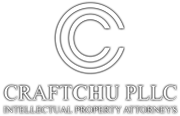Internet Domain Names

A domain name is an identification label that defines a realm of administrative autonomy, authority, or control in the Internet, based on the Domain Name System (DNS).
Domain names are used in various networking contexts and application-specific naming and addressing purposes. They are organized in subordinate levels (subdomains) of the DNS root domain, which is nameless. The first-level set of domain names are the top-level domains (TLDs), including the generic top-level domains (gTLDs), such as the prominent domains .com, .net and .org, and the country code top-level domains (ccTLDs).
Below these top-level domains in the DNS hierarchy are the second-level and third-level domain names that are typically open for reservation by end-users that wish to connect local area networks to the Internet, run web sites, or create other publicly accessible Internet resources. The registration of these domain names is usually administered by domain name registrars who sell their services to the public.
The top-level domains (TLDs) are the highest level of domain names of the Internet. They form the DNS root zone of the hierarchical Domain Name System. Every domain name ends in a top-level or first-level domain label. Below the top-level domains in the domain name hierarchy are the second-level domain (SLD) names. These are the names directly to the left of .com, .net, and the other top-level domains. As an example, in the domainen.wikipedia.org, wikipedia is the second-level domain.
All domain name registrars must follow the Uniform Domain-Name Dispute-Resolution Policy (“UDRP”). Under the UDRP, most types of trademark-based domain-name disputes must be resolved by agreement, court action, or arbitration before a registrar will cancel, suspend, or transfer a domain name. Disputes alleged to arise from abusive registrations of domain names (for example, cybersquatting) may be addressed by expedited UDRP proceedings that the holder of trademark rights initiates by filing a complaint with an approved dispute-resolution service provider.
A complainant in a UDRP proceeding must establish three elements to succeed: (i) the domain name is identical or confusingly similar to a trademark or service mark in which the complainant has rights (registered or at common law); (ii) the registrant does not have any rights or legitimate interests in the domain name; and (iii) the domain name has been registered and the domain name is being used in “bad faith”.
To learn more about our team of professionals and to find domain name attorney in Houston that is the right fit for your company, please explore information about our practice and our services. To contact us directly, call us at 713.802.9144. For additional information on domain name disputes, you may visit ICANN.
